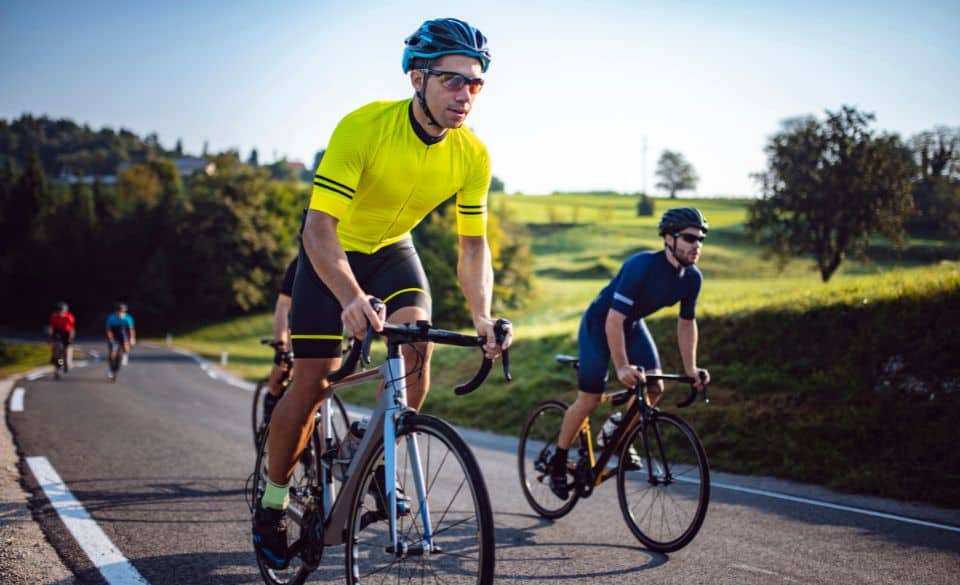
Cycling Training for Climbing: Conquer the Hills with These Strategies
Page Contents
Cycling enthusiasts often seek the thrill and challenge of conquering steep climbs. Whether you’re a seasoned cyclist or a beginner looking to improve your climbing abilities, having a solid training plan can make a significant difference. In this blog post, we’ll explore effective strategies and training techniques to help you excel at climbing on your bike.
Understanding the Demands of Climbing
Climbing on a bike requires a unique set of physical and mental skills. It challenges your cardiovascular endurance, leg strength, and overall power output. Climbing also demands mental resilience and the ability to maintain focus and motivation when facing steep gradients and prolonged efforts. Understanding the demands of climbing is crucial in designing an effective training program.
Build Your Endurance Foundation
Endurance forms the foundation of successful climbing. Long, steady rides at a moderate intensity help improve your aerobic capacity and build the necessary base fitness. Aim for rides of increasing duration, gradually pushing your limits. Longer rides allow your body to adapt to sustained efforts and develop the stamina needed for climbs. Include hilly routes in your training to simulate climbing conditions and work on pacing strategies.
Studies have shown that incorporating high-intensity interval training (HIIT) can be beneficial for climbing performance. Short, intense efforts followed by periods of recovery help improve your lactate threshold and overall power output. Adding intervals to your training regimen can enhance your ability to generate power during climbs and recover quickly between efforts.
Strengthen Your Climbing Muscles
Climbing puts significant strain on your lower body muscles, particularly your quadriceps, glutes, and calves. To improve your climbing abilities, focus on strength training exercises that target these muscle groups. Squats, lunges, and deadlifts are excellent compound exercises that build overall leg strength. Additionally, incorporating plyometric exercises such as box jumps and single-leg hops can improve explosive power, which is crucial for short, punchy climbs.
Recent studies have highlighted the benefits of incorporating hill repeats into your training routine. Find a challenging climb and repeat it multiple times, aiming to improve your speed and power with each repetition. Hill repeats help simulate climbing conditions and enhance your ability to handle steep gradients efficiently.
Master Your Climbing Technique
Apart from physical training, honing your climbing technique can significantly improve your climbing performance. Focus on maintaining a smooth pedaling rhythm and efficient bike handling skills. Experiment with different body positions to optimize your balance and weight distribution on the bike. On steep climbs, shifting your weight slightly forward can help maintain traction and prevent wheel slippage.
To improve your climbing technique, it can be beneficial to join group rides or participate in cycling events that include challenging climbs. Riding with experienced climbers allows you to observe their techniques, learn from their strategies, and gain confidence in tackling difficult ascents.
Body Weight and Power-to-Weight Ratio
The relationship between body weight and climbing performance is often discussed in terms of the power-to-weight ratio. The power-to-weight ratio is the amount of power (watts) you can generate per kilogram of body weight. A higher power-to-weight ratio is generally advantageous for climbing, as it allows you to produce more power relative to your weight.
Reducing your body weight while maintaining or increasing your power output can lead to an improved power-to-weight ratio, which can positively impact your climbing abilities. However, it’s important to note that extreme weight loss can have negative effects on your overall health and performance. It’s crucial to maintain a balanced approach and prioritize sustainable weight management strategies.
Best Cycling Workouts to Improve Your Climbing Abilities
Climbing on a bike requires a specific set of skills and fitness attributes. To enhance your climbing abilities, incorporating targeted workouts into your training regimen is essential. In this blog post, we’ll explore some of the best cycling workouts that can help you improve your climbing performance.
1. Hill Repeats
Hill repeats are an effective workout to build strength and endurance for climbing. Find a challenging hill or incline and repeat climbing it multiple times. Start with a moderate effort, gradually increasing your intensity with each repetition. Focus on maintaining a steady cadence and proper form. Hill repeats allow you to simulate climbing conditions, enhance your leg strength, and improve your ability to handle steep gradients.
2. High-Intensity Intervals
Including high-intensity intervals in your training can significantly improve your climbing performance. These intervals involve short bursts of intense effort followed by periods of active recovery. For example, you can perform 1-minute intervals at maximum effort, followed by 2-3 minutes of easy pedaling to recover. Repeat this cycle several times during your workout. High-intensity intervals help improve your lactate threshold, increase your power output, and train your body to handle the demands of climbing.
3. Threshold Climbs
Threshold climbs are workouts that target your anaerobic threshold, the point at which your body transitions from aerobic to anaerobic energy production. Find a climb or route with a sustained gradient and aim to ride at or just below your anaerobic threshold for an extended period. This workout helps improve your ability to sustain high-intensity efforts during climbs, enhances your endurance, and trains your body to handle the physiological demands of climbing.
4. Tempo Rides
Tempo rides are an effective way to develop your climbing endurance and improve your aerobic capacity. These rides involve maintaining a steady effort just below your lactate threshold for an extended duration. Aim for rides of 30 minutes to an hour, focusing on maintaining a consistent and challenging pace. Tempo rides help build your cardiovascular fitness, improve your ability to sustain efforts during climbs, and enhance your overall climbing performance.
5. Overgear Training
Overgear training involves riding in a harder gear than usual to increase the resistance and put more stress on your climbing muscles. Find a moderate climb or a flat road, and ride in a gear that requires a higher effort than you’re accustomed to. This workout helps develop leg strength, improves your muscular endurance, and prepares you for the challenges of steep climbs.
Remember to warm up properly before each workout, stay hydrated, and listen to your body. Gradually progress the intensity and duration of your workouts over time. Incorporating a mix of these cycling workouts into your training plan will help you become a stronger and more efficient climber, enabling you to tackle challenging ascents with confidence and enjoyment.



